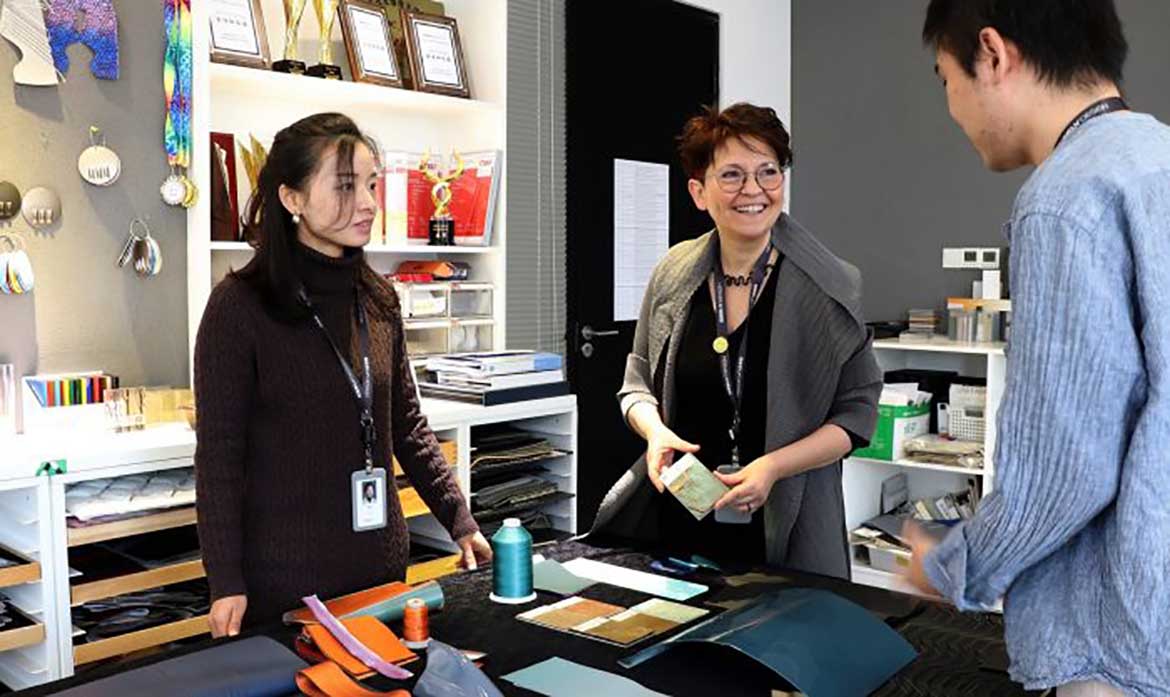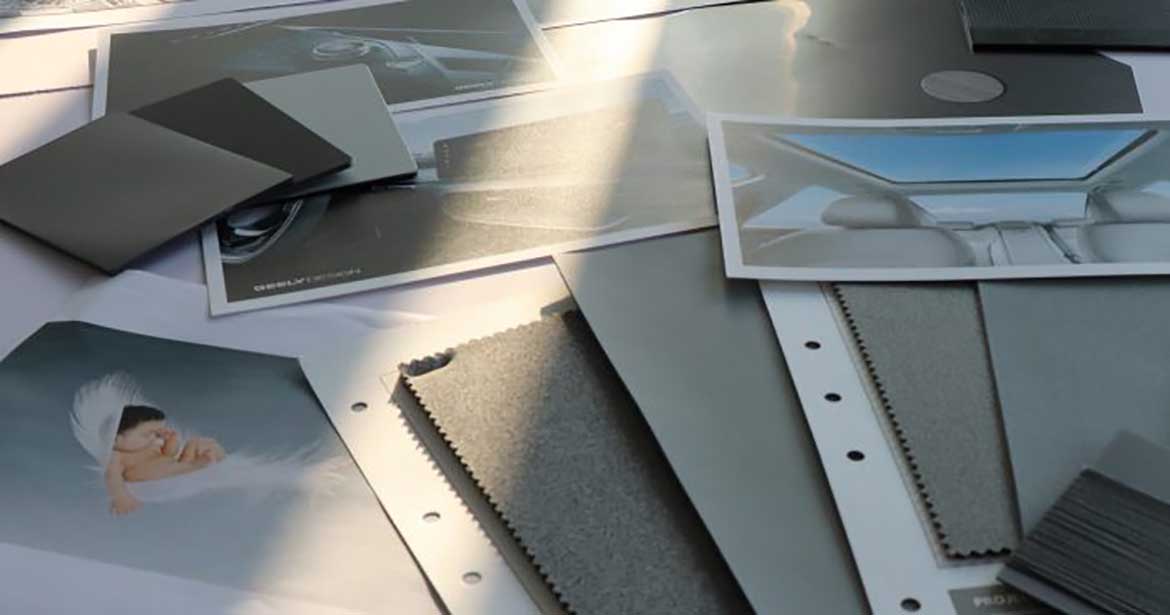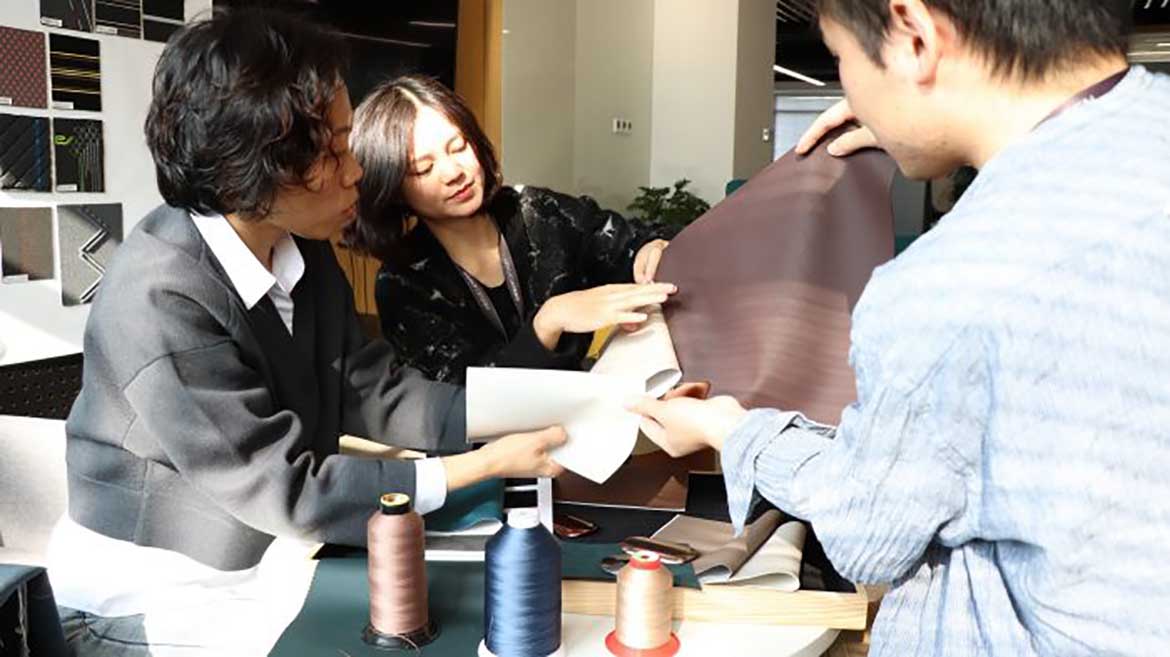When it comes to automotive design, sketches of red sports cars with scissor doors and black windshields come to mind. But car design is much more than just exterior styling. Determining the color and texture of the surface material is of equal importance. Elsa Zhang, Director of Color Material and Finish (CMF) at Geely Design China, and Dana Popescu, Expert CMF Design at Geely Design China, lead the way on a journey through the Chinese automotive group’s colors and materials.
“The exterior designers are like sculpting a person’s figure, while later CMF’s designers work on makeup, clothes, and hairstyles to give the figure a character-enhancing personality. On rare occasions, however, a strongly defined personality is expected from the start, where a certain color or material might instead influence the overall design,” says Elsa Zhang. CMF’s designers then apply their knowledge of color based on what each color represents psychologically or culturally, while also considering current market trends.
For example, with the pandemic underway, anxiety is at an all-time high, so more soothing tones might be preferred to something flashy or neutral. The volume and proportion of the car also matter. Cars with a squarer shape will fit better with solid colors or matte effects. Color choices don’t always indicate someone’s personality. For example, black is usually chosen for commercial purposes while silver is used to ensure good value on the used car market. In both cases, personal preference that might reflect one’s character is sacrificed to satisfy other reasons. A unique and interesting fact about the Chinese market is that there is a huge base of young customers who want their cars to be fresh and distinct from those of previous generations.
To maintain cost efficiency, not all colors chosen are created ad hoc for each model. Most automakers will reuse their popular colors for several years, such as black, white, silver, gray and champagne. After the CMF has pre-selected the colors, several recommendations are made to product and marketing. These departments will apply their deeper market and customer knowledge to make a more informed and final decision, selecting an average of five to six colors for a given model.














